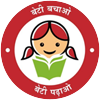Annual Action Plan 2020-21: Focus Area Programme
Establishing Disaster Risk Reduction and Preparedness Teams
Disasters and climate change are key focus areas of global development agenda. Disaster risk reduction (DRR) is recognized as
an integral part of sustainable development programme which could be only achieved by relying on the development of resilient communities.
The Sendai Framework for Disaster Risk Reduction (SFDRR) 2015 - 2030 emphasizes the vital role of volunteerism at national and local
levels in accordance with legislation, national practice and educational curricula. In particular, youth volunteerism plays a pivotal role in building resilient
communities by becoming “engaged actors in their own development.”
Any disaster requires a quick response to save lives, contain the damage and prevent any secondary disasters. Affected community is always the “First Responder”.
In most instances, this takes place spontaneously, outside any organized setting. Volunteers from the community play a vital role in immediate response to any disaster.
National Disaster Response Force, State Disaster Response Force and other orgnised services including police, fire services etc. take some time to reach the disaster sites.
In the meantime, volunteer groups not only provide in initial rescue and relief services but also act as link between the affected community and institutions arriving at
the scene, thus strengthening response by the government actors. Volunteers also work as “force multiplier”
particularly when the emergency services have to be reached to the remotest affected community.
The High Power Committee (HPC) Report on Disaster Management, India, highlighted the role of volunteer action and suggested ‘organising of a nationwide
network of NGOs with an acronym VASUDEVA – Voluntary Agencies for Sustainable Universal Development and Emergency Voluntary Action with the intention of
creating a bridge between the NGOs and the Government sector as also within the NGOs working in the field of disaster management’ The National Disaster Management
Plan 2016 (NDMP 2016) also strongly emphasizes the role of volunteers under training, capacity building and other preparedness and response activities which
will be coordinated by the National Executive Committee (NEC).
It is therefore proposed to establish institutional mechanism for organized and structured engagement of NYKS by Establishing Disaster Response
Teams (DRTs) of volunteers as first responders in hazard prone districts. It is proposed to cover such districts in India in a phased manner in collaboration with
National Disaster Management Authority (NDMA), State Disaster Management Authorities (SDMA) and or National Disaster Response Force (NDRF).
Objective
- To put in place an institutional mechanism for organized and structured engagement of NYKS volunteers for disaster preparedness and post-disaster response & relief at block and district level
- To create teams of trained volunteers in selected hazard prone districts to act as first responders to disaster
- To plan and conduct programs by trained volunteers during normal time for community awareness and preparedness
- To maintain comprehensive data base on trained youth volunteers on NYKS portal
Suggestive Actions
- Selection of youth across the country
- Form batches of youth per training for training at SDMAS / NDRF battalions.
- Conduct customized professional training on agreed syllabus at SDMs/NDRF battalions.
- Establish data base of DRTs Volunteers on NYKS website.
- Prepare SOP for involving trained youth volunteers during normal time
- Establishing linkages with District Disaster Management Authority (DDMA)
- Sharing database of trained volunteers with DDMA
Collaborative Agencies
- Youth Clubs and Youth Leaders and Volunteers
- NDMA and SDMA
- NDRF at National level
- NDRF Battalions in India
- District Disaster Management Authority
- District Administration
- Gram Panchayat and Opinion Leaders
- Educational Institutes
Expected Outcomes - Monitoring and Success Indicators
- Developed Portal Hosted on NYKS Website for viewing list & profile of enrolled & trained youth volunteers
- No. of State/UTs, Districts and Blocks covered
- No. of training programs conducted
- No. of youth volunteers professionally trained by SDMAs, NDRF as the case may be
- No. of awareness activities voluntarily conducted by trained youth during normal time
- No. of youth mobilized for disaster response activities
In order to provide support in realizing the objectives of Focus Area - Establishing Disaster Risk Reduction and Preparedness
Teams with the spirit of volunteerism, Core Programme and SOP of this program is given in Chapter – 4. The interventions would enhance
the capacity, level of awareness, understanding, leadership, motivation and skills of youth and thereby facilitate them in implementing focus areas
activities in their respective villages with expected outcomes.
District Youth Coordinators should give target to NYVs to cover cluster of 25-30 Youth Clubs or as per the need.
NYVs should guide and help the allotted villages Youth Clubs in finalizing their Action Plans for Focus Area - Establishing Disaster Risk
Reduction and Preparedness Teamsin the proforma given at Annexure- 6, 6A and 6 B. NYVs should facilitate coordination and regularly be in contact
with the allotted Youth Clubs and motivate members of Youth Clubs, COVID volunteers and others to undertake above mentioned focus area activities on voluntary
basis in their respective villages












